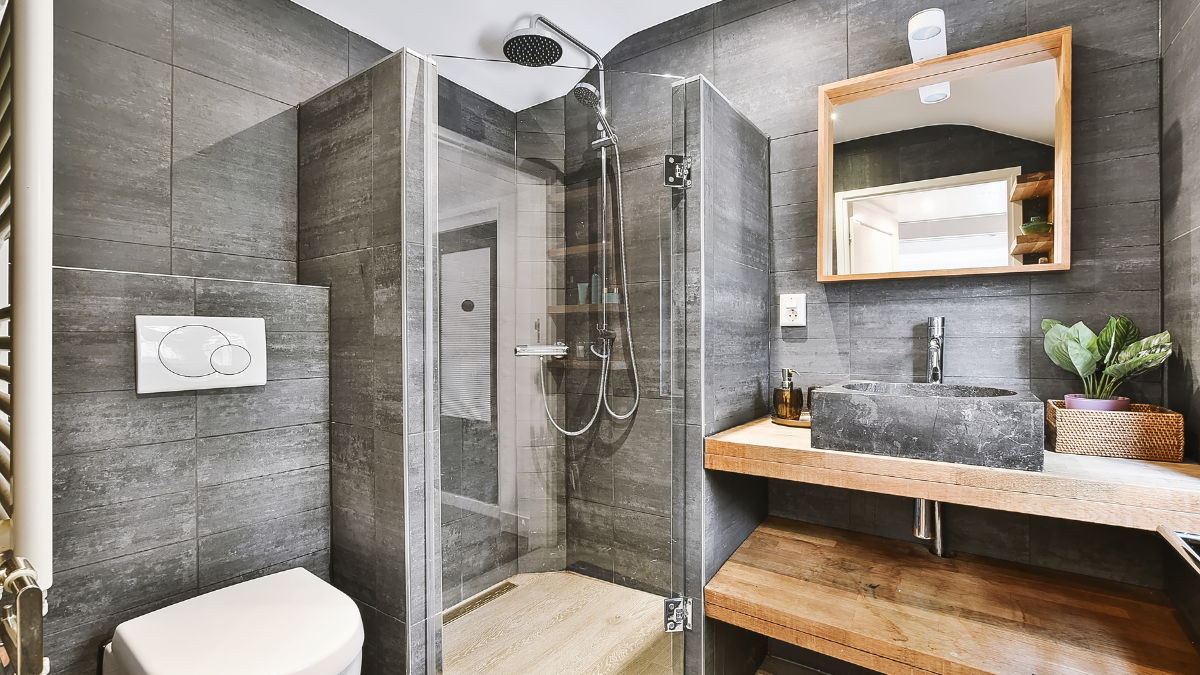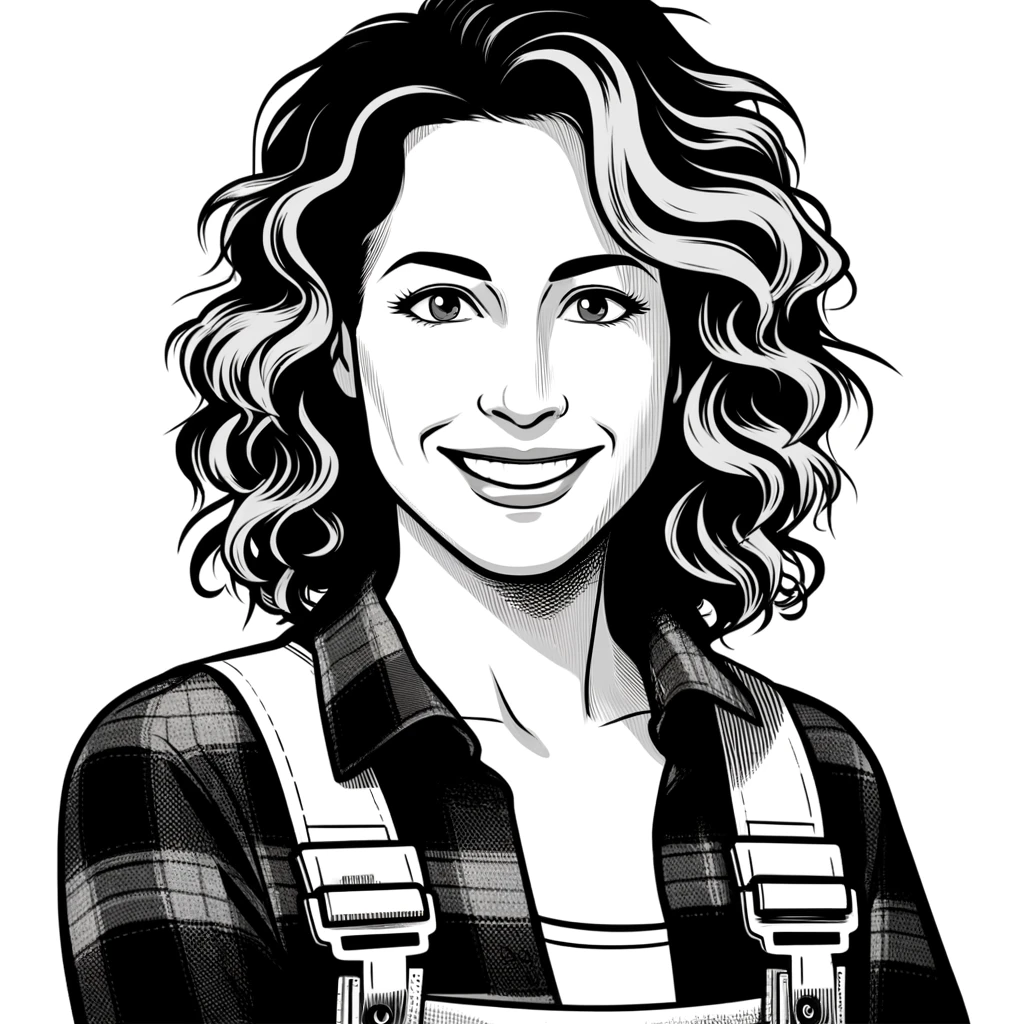Introduction
Designing a bathroom is an exciting project that can transform one of the most important rooms in your home. Whether you’re renovating an existing bathroom or building a new one, a well-designed bathroom combines functionality, comfort, and style. This guide will walk you through the key steps to design a bathroom that meets your needs and reflects your personal taste.
Assessing Your Needs
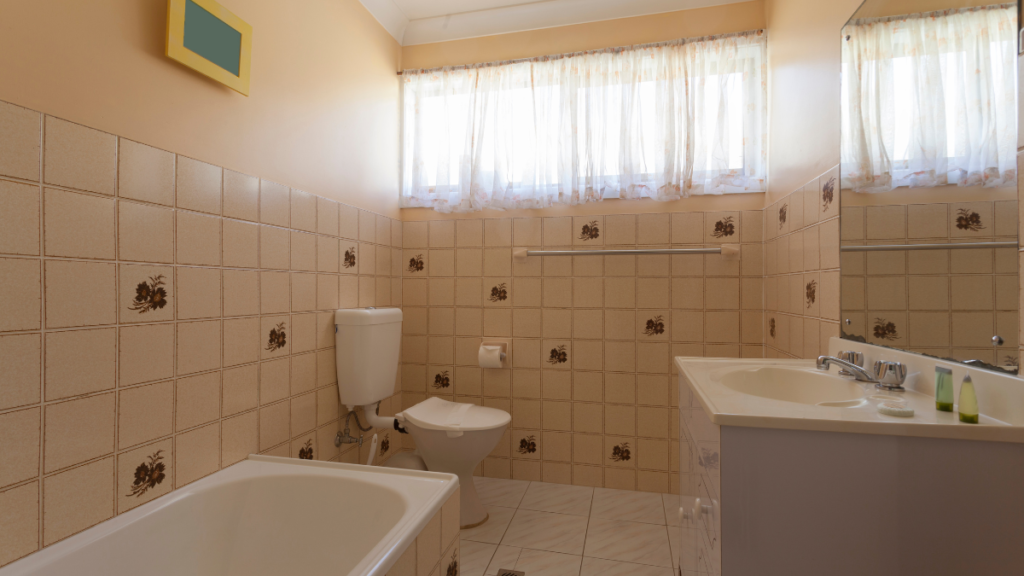
Before you start designing, it’s crucial to understand your specific needs. Consider who will be using the bathroom and how often. Think about the essential features you want to include, such as a bathtub, shower, or double vanity.
User Needs
Identify the primary users of the bathroom:
- Family Bathroom: Designed for everyday use by all family members.
- Guest Bathroom: A secondary bathroom mainly for visitors.
- Ensuite: A private bathroom attached to a bedroom.
- Accessible Bathroom: Includes features for those with mobility issues.
Features
List must-have features for your bathroom:
- Bathtub: Ideal for families with children or for relaxation.
- Shower: Quick and efficient, suitable for small spaces.
- Double Vanity: Offers extra space for couples or families.
- Storage: Essential for keeping the bathroom organised.
Space Considerations
Assess the available space and layout possibilities:
- Size of the Room: Measure the dimensions of the bathroom.
- Plumbing Locations: Consider existing plumbing to minimise costs.
- Natural Light: Utilise windows to enhance lighting and ventilation.
Planning the Layout
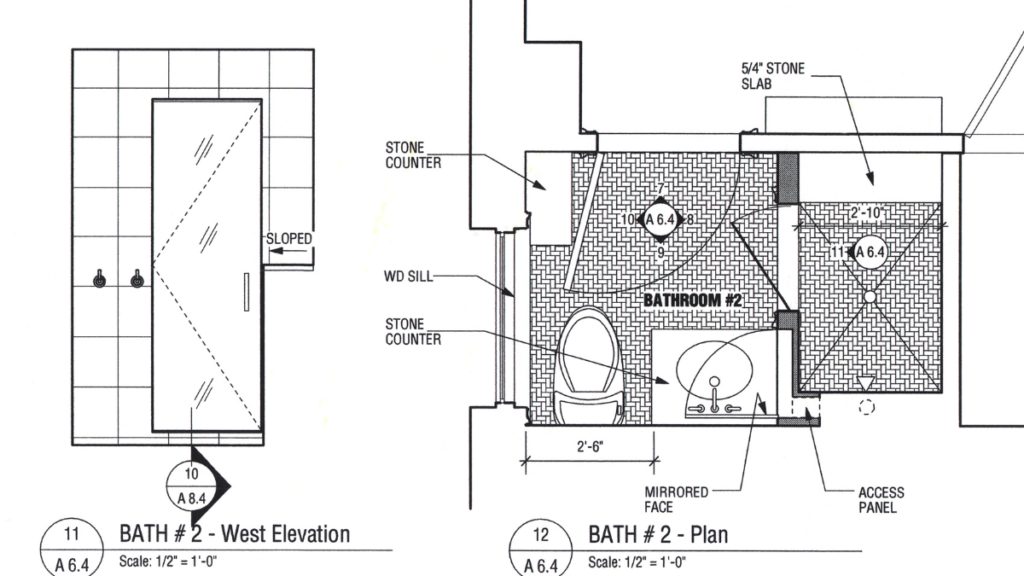
A good layout is the foundation of an efficient bathroom. The layout should ensure easy movement and accessibility.
Work Triangle
Position the sink, toilet, and shower/bathtub for optimal use:
- Efficient Positioning: Ensure these elements are easy to access.
- Flow and Movement: Allow sufficient space for movement between fixtures.
- Ergonomic Design: Fixtures should be at a comfortable height and distance.
Space Planning
Plan for sufficient space around each fixture:
- Clearances: Ensure there is enough room to use each fixture comfortably.
- Zoning: Separate wet areas (shower, bathtub) from dry areas (vanity, storage).
- Accessibility: Design with accessibility in mind, ensuring easy access for all users.
Selecting Fixtures and Fittings
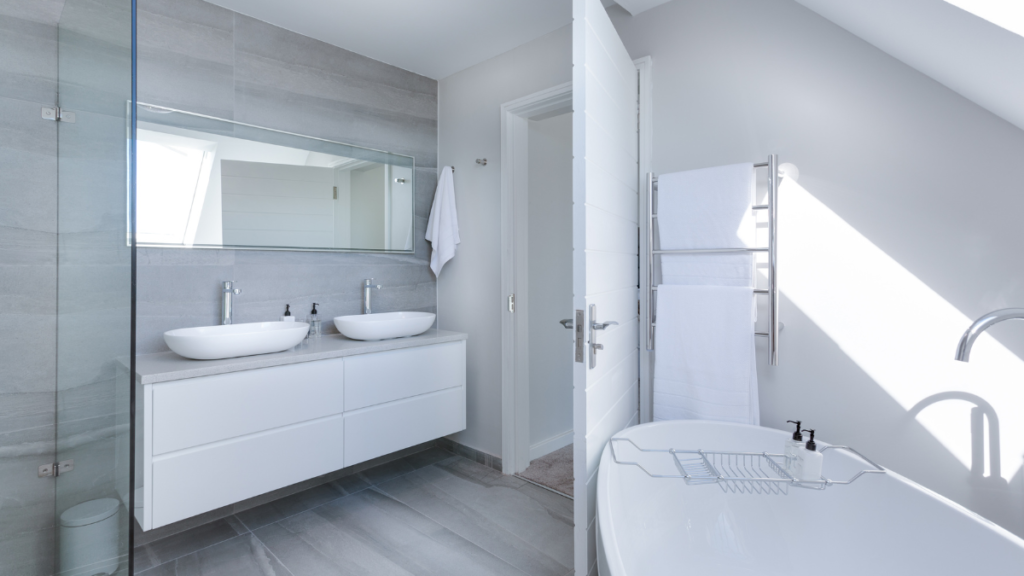
Choosing the right fixtures and fittings is essential for both functionality and aesthetics. Consider the style, size, and placement of each item.
Bathtub vs. Shower
Decide between a bathtub, a shower, or both:
- Bathtub: Great for relaxation and bathing children.
- Shower: Ideal for quick and efficient use, saving water and space.
- Combo: A bathtub-shower combo offers the best of both worlds.
Vanity and Sink
Choose a vanity that offers storage and matches your style:
- Single vs. Double: Single vanities save space; double vanities provide extra convenience.
- Storage Solutions: Look for vanities with drawers and cabinets.
- Sink Styles: Consider under-mount, vessel, or integrated sinks.
Toilet
Select a toilet that fits well within the space:
- Standard vs. Compact: Choose based on the available space.
- Wall-Mounted: Saves floor space and offers a modern look.
- Comfort Height: Easier for all users, especially the elderly or disabled.
Choosing Materials and Finishes
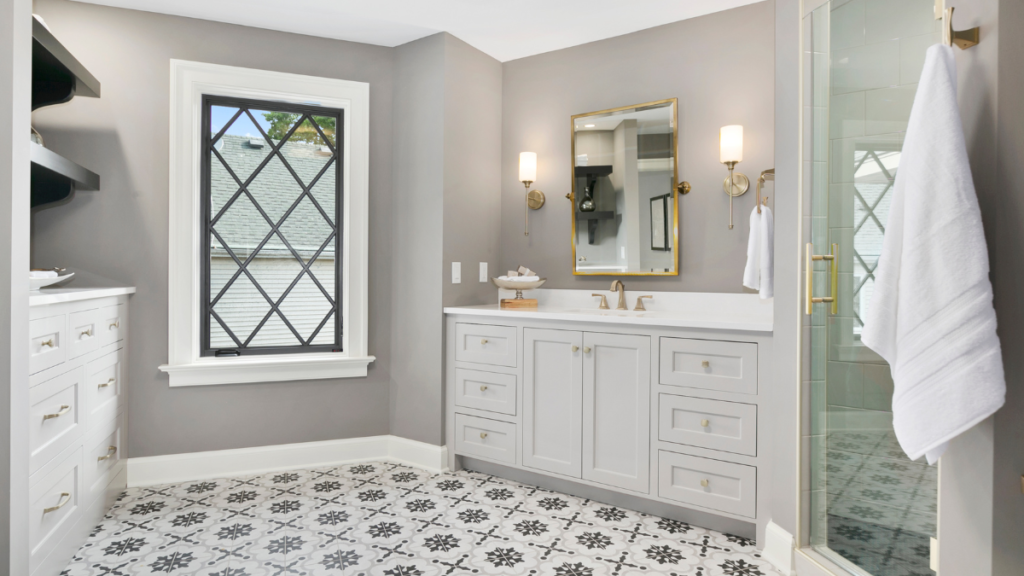
The materials and finishes you choose will impact the bathroom’s look and durability. Opt for water-resistant and easy-to-clean materials.
Flooring
Tiles, vinyl, or natural stone are popular choices:
- Tiles: Durable, water-resistant, and available in many styles.
- Vinyl: Affordable, water-resistant, and easy to install.
- Natural Stone: Luxurious but requires regular maintenance.
Walls
Waterproof paint, tiles, or panelling:
- Paint: Choose mould-resistant paint for durability.
- Tiles: Easy to clean and available in various designs.
- Panelling: Provides a traditional look and is easy to install.
Countertops
Quartz, granite, or marble for durability and style:
- Quartz: Non-porous, durable, and low maintenance.
- Granite: Natural beauty and heat resistant.
- Marble: Elegant but requires regular sealing.
Lighting Design
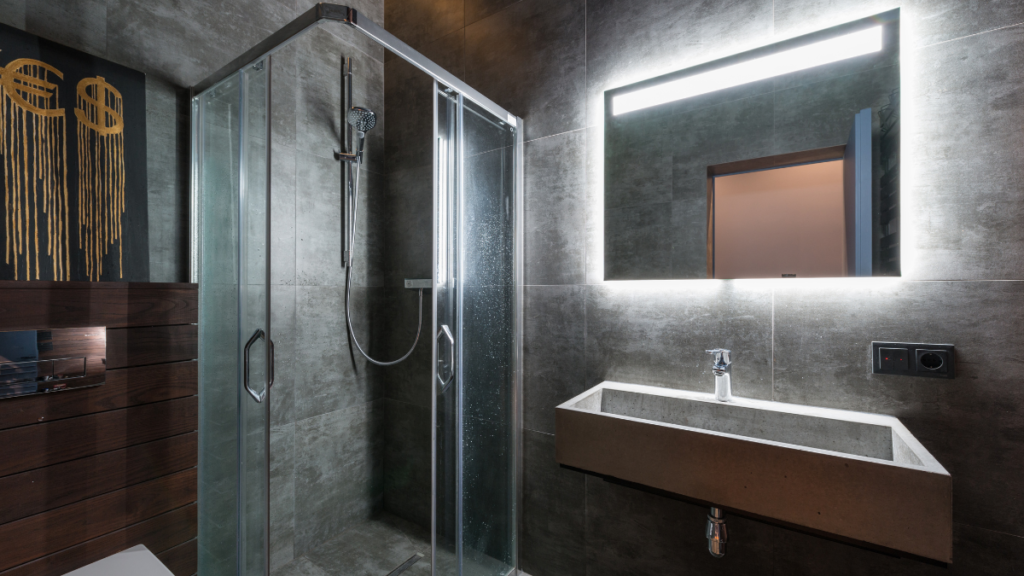
Proper lighting is crucial in a bathroom for both function and ambiance. Combine different types of lighting to create a well-lit and inviting space.
Task Lighting
Lighting around mirrors for grooming:
- Vanity Lights: Position on either side of the mirror to reduce shadows.
- Overhead Lights: Provide additional light for detailed tasks.
Ambient Lighting
Overall illumination for the room:
- Ceiling Lights: Central fixtures to light up the entire space.
- Recessed Lights: Offer a clean and modern look.
Accent Lighting
Highlight architectural features or artwork:
- LED Strips: Under cabinets or around mirrors.
- Wall Sconces: Add decorative and functional lighting.
Storage Solutions
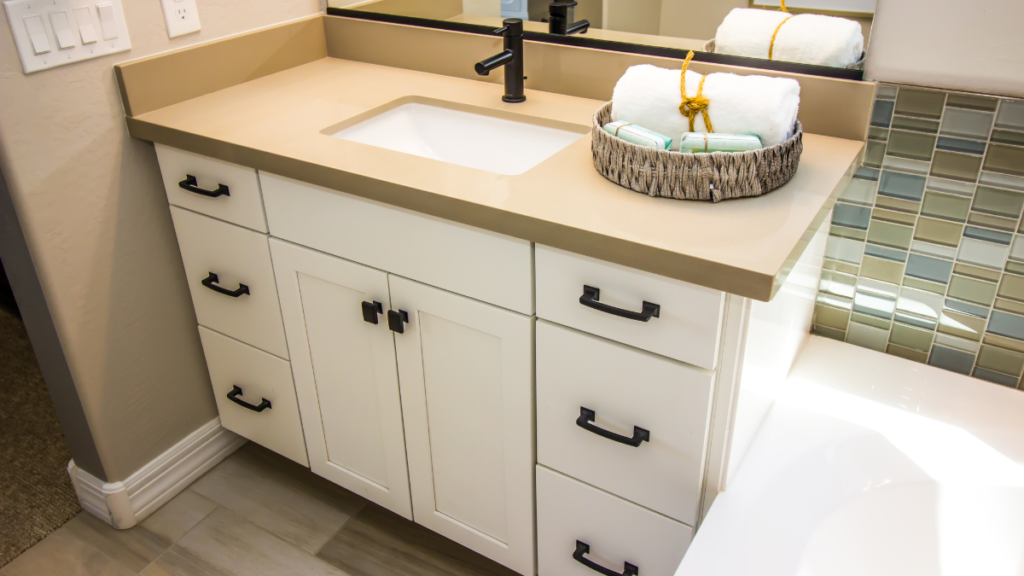
Effective storage solutions help keep the bathroom organised and clutter-free. Incorporate storage into the design from the start.
Cabinets and Shelves
Use wall-mounted cabinets and shelves to save space:
- Wall Cabinets: Provide storage without taking up floor space.
- Floating Shelves: Stylish and functional for displaying items.
Vanity Storage
Choose vanities with built-in storage options:
- Drawers and Cabinets: Keep toiletries and cleaning supplies organised.
- Open Shelves: Display decorative items or store towels.
Creative Solutions
Consider over-the-toilet storage or recessed shelves:
- Over-the-Toilet: Maximise vertical space with shelves or cabinets.
- Recessed Shelves: Built into walls for a sleek look and additional storage.
Colour Scheme and Aesthetics
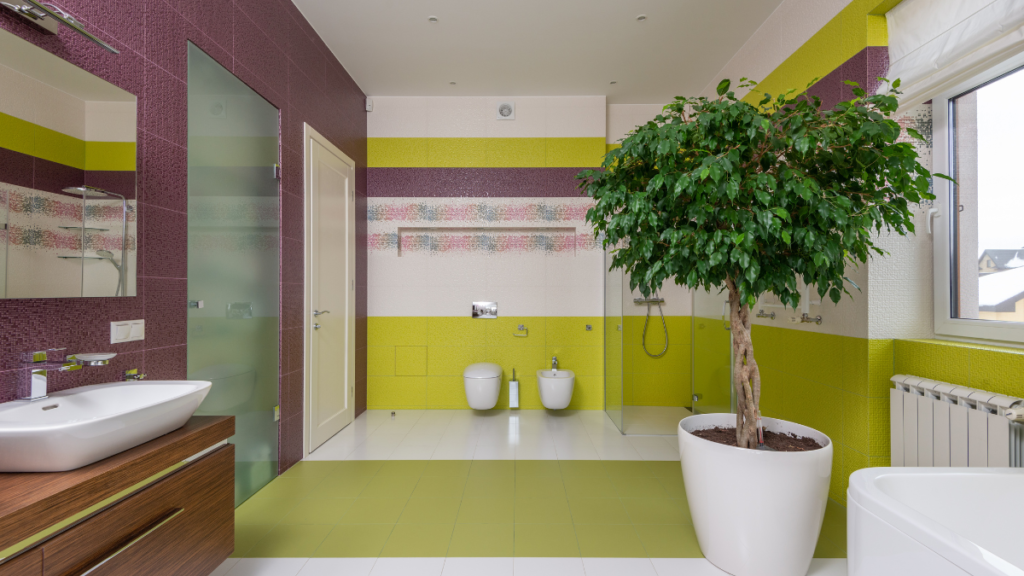
The colour scheme sets the tone for your bathroom. Choose colours that reflect your style and create a relaxing atmosphere.
Neutral Tones
Create a calm and timeless look:
- Whites and Greys: Classic and versatile, they make spaces look larger.
- Beiges and Taupes: Warm neutrals that add coziness.
Bold Colours
Add personality and vibrancy:
- Blues and Greens: Calming and refreshing.
- Bold Accents: Use on feature walls or in accessories.
Accent Colours
Use towels, rugs, and accessories to introduce accent colours:
- Coordinated Accessories: Match with the overall colour scheme.
- Seasonal Changes: Easily update the look with new accessories.
Finalising the Design
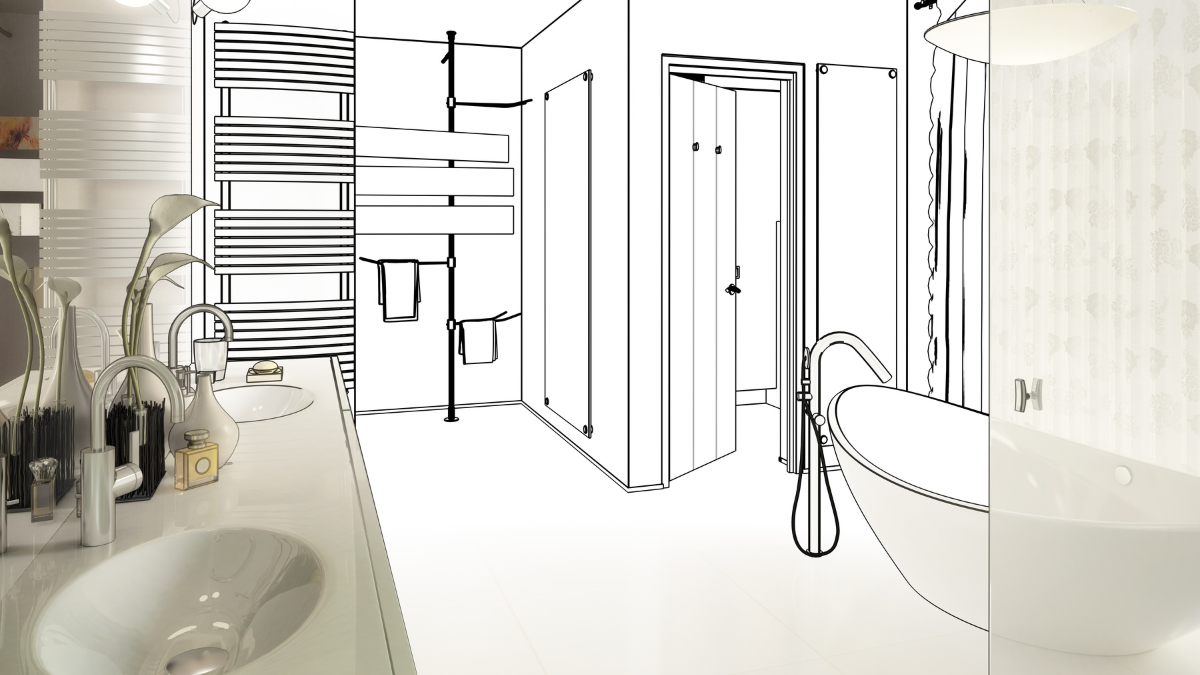
Bathroom 3D
Once you’ve made the major decisions, it’s time to finalise your design. Create a detailed plan to guide the construction or renovation process.
Detailed Plan
Include measurements and specifications:
- Measurements: Accurate dimensions of all elements.
- Specifications: Details on materials, fixtures, and finishes.
Design Software
Use design software to visualise the final result:
- 3D Renderings: See how the finished bathroom will look.
- Adjustments: Make changes before starting construction.
Professional Help
Consider hiring a professional for complex projects:
- Bathroom Designers: Expert advice on layout and materials.
- Contractors: Ensure quality workmanship and adherence to timelines.
Budgeting and Timeline
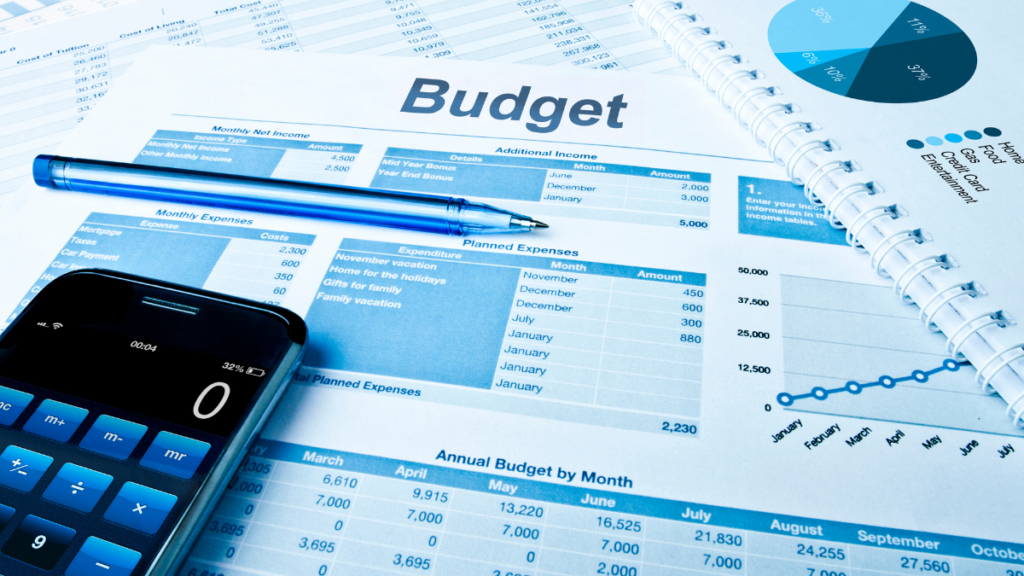
Setting a budget and timeline helps ensure your project stays on track. Plan for all costs and allow some flexibility for unexpected expenses.
Budget Breakdown
Include costs for materials, labour, and fixtures:
- Materials: Flooring, tiles, countertops, and paint.
- Labour: Contractor fees and installation costs.
- Fixtures: Sinks, toilets, bathtubs, and lighting.
Timeline
Establish a realistic timeline for each phase of the project:
- Planning Phase: 1-2 weeks for design and budgeting.
- Construction Phase: 2-4 weeks depending on the scope of work.
- Final Touches: 1 week for finishing and decoration.
Contingency Fund
Set aside extra funds for unexpected costs:
- Additional Costs: Plan for potential overruns or surprises.
- Flexibility: Adjust the budget as needed to cover unforeseen expenses.
Implementation and Construction
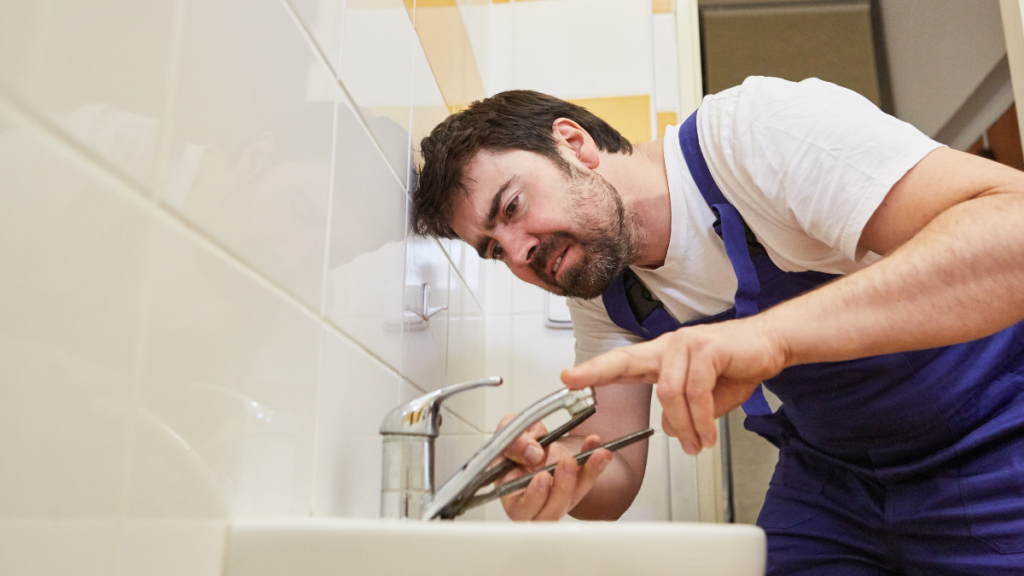
With a solid plan in place, you can begin the implementation and construction phase. This involves hiring contractors, purchasing materials, and overseeing the work.
Hiring Contractors
Choose experienced professionals for quality work:
- Research: Check reviews and get recommendations.
- Interviews: Meet with potential contractors to discuss your project.
- Contracts: Have clear contracts detailing the scope of work, timeline, and costs.
Purchasing Materials
Order materials and fixtures ahead of time:
- Bulk Orders: Save money by purchasing in bulk.
- Delivery: Ensure materials are delivered on schedule.
Overseeing the Project
Regularly check the progress and address any issues promptly:
- Site Visits: Regularly visit the site to monitor progress.
- Communication: Maintain open communication with your contractor.
- Problem Solving: Address any issues or changes quickly.
Finishing Touches
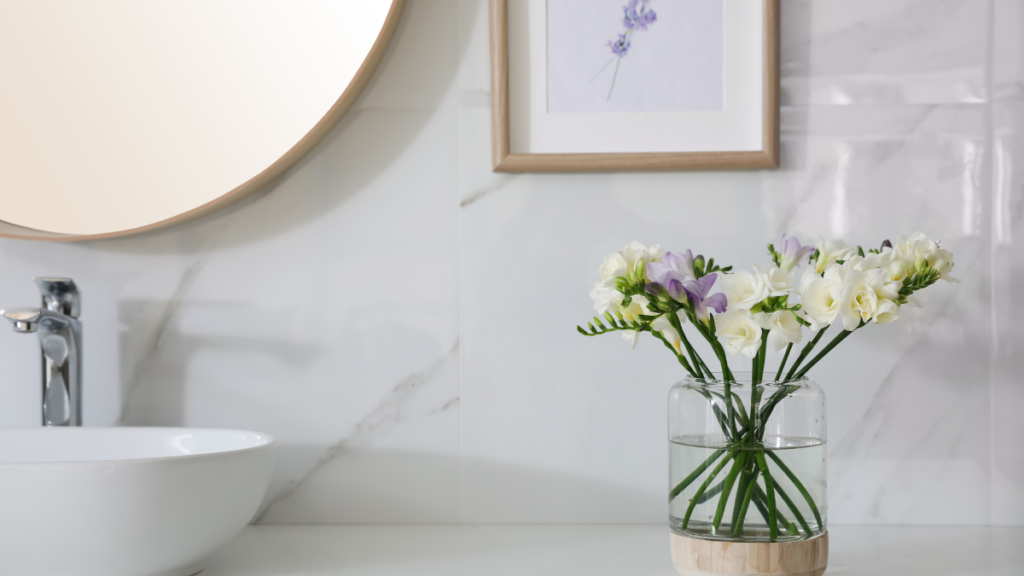
The finishing touches bring your bathroom design together. Add personal touches to make the space feel complete.
Accessories
Choose towels, rugs, and décor that match your design:
- Matching Sets: Coordinate accessories with your colour scheme.
- Functional Decor: Combine style and functionality with items like soap dispensers and toothbrush holders.
Plants and Artwork
Add plants and artwork for a fresh look:
- Greenery: Choose plants that thrive in humid environments.
- Art Pieces: Select artwork that complements the bathroom’s style.
Functional Additions
Include practical items like soap dispensers and toothbrush holders:
- Soap Dispensers: Stylish and convenient options.
- Storage Baskets: Keep toiletries organised and accessible.
FAQs
How do I start designing my bathroom?
Start by assessing your needs, planning the layout, and choosing fixtures and materials that fit your style and budget.
- Assess Needs: Determine how you use your bathroom and what features are essential.
- Set a Budget: Establish a realistic budget to guide your decisions.
- Plan Layout: Choose a layout that maximises space and efficiency.
What are the best materials for bathroom countertops?
Durable options like quartz, granite, and marble are excellent choices for bathroom countertops.
- Quartz: Non-porous, durable, and low maintenance.
- Granite: Natural beauty and heat resistant.
- Marble: Elegant but requires regular sealing.
How can I maximise storage in a small bathroom?
Use wall-mounted cabinets, shelves, and creative solutions like over-the-toilet storage to maximise space.
- Wall Cabinets: Provide storage without taking up floor space.
- Floating Shelves: Stylish and functional for displaying items.
- Recessed Shelves: Built into walls for a sleek look and additional storage.
What type of lighting is best for bathrooms?
Combine task lighting around mirrors, ambient lighting for overall illumination, and accent lighting to highlight features.
- Task Lighting: Around mirrors for grooming.
- Ambient Lighting: Overall illumination for the room.
- Accent Lighting: Highlight architectural features or artwork.
How do I choose the right colour scheme for my bathroom?
Consider neutral tones for a timeless look or bold colours for personality. Use accent colours in accessories to enhance the design.
- Neutral Tones: Create a calm and timeless look.
- Bold Colours: Add personality and vibrancy.
- Accent Colours: Use towels, rugs, and accessories to introduce accent colours.
External Links
- Bathroom Planning Guide: B&Q
- Hiring Bathroom Contractors: Checkatrade
Conclusion
Designing a bathroom requires careful planning and attention to detail. By following this guide, you can create a functional, stylish, and comfortable bathroom that meets your needs and enhances your home’s value. Take the time to plan, choose the right materials and fixtures, and execute your design thoughtfully to achieve a bathroom you’ll love for years to come.
